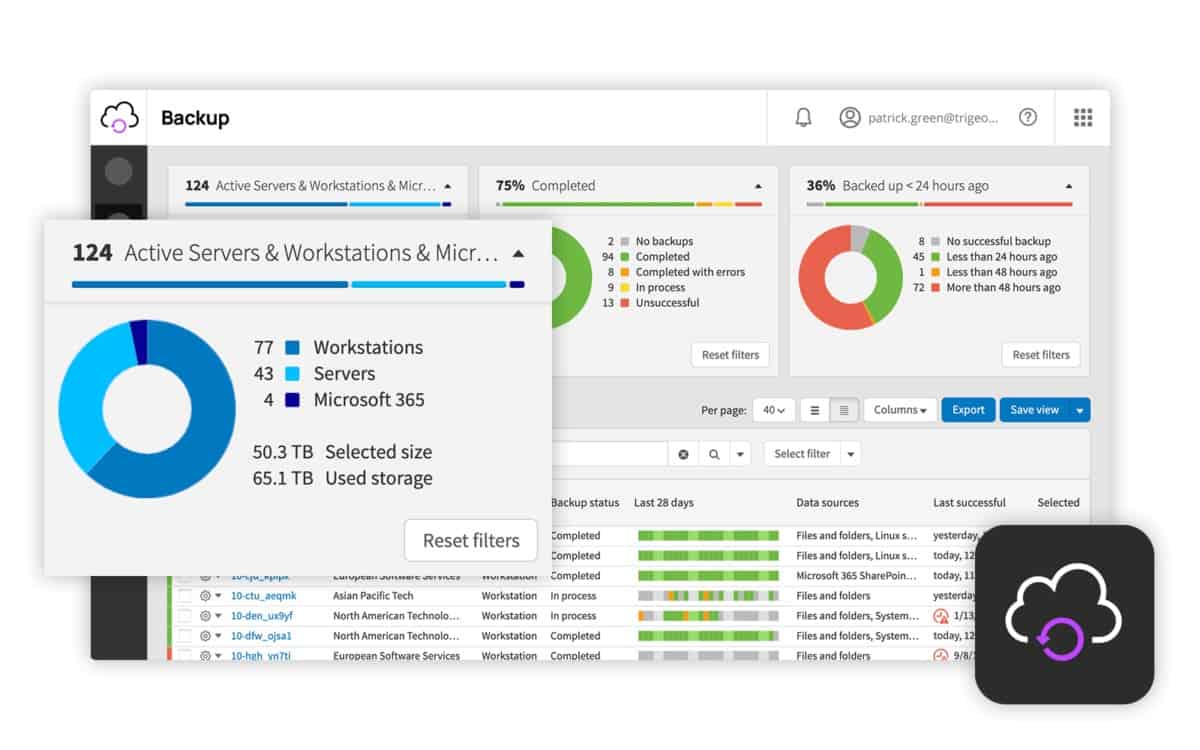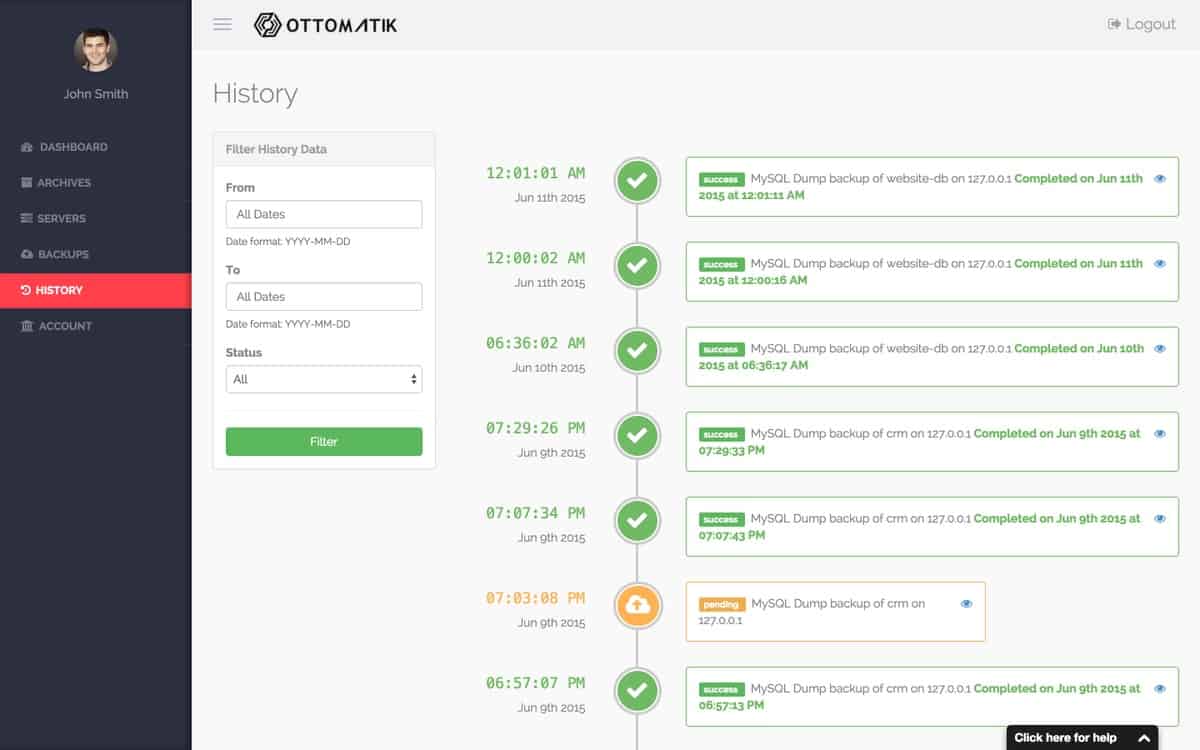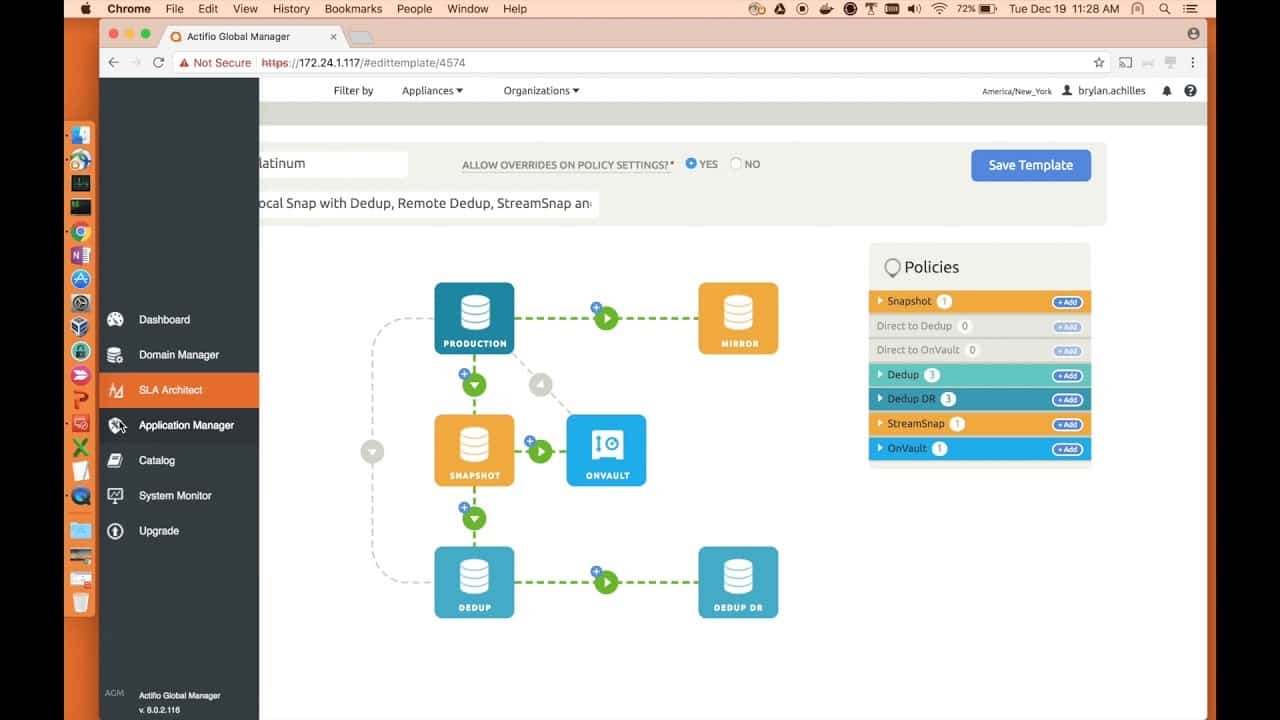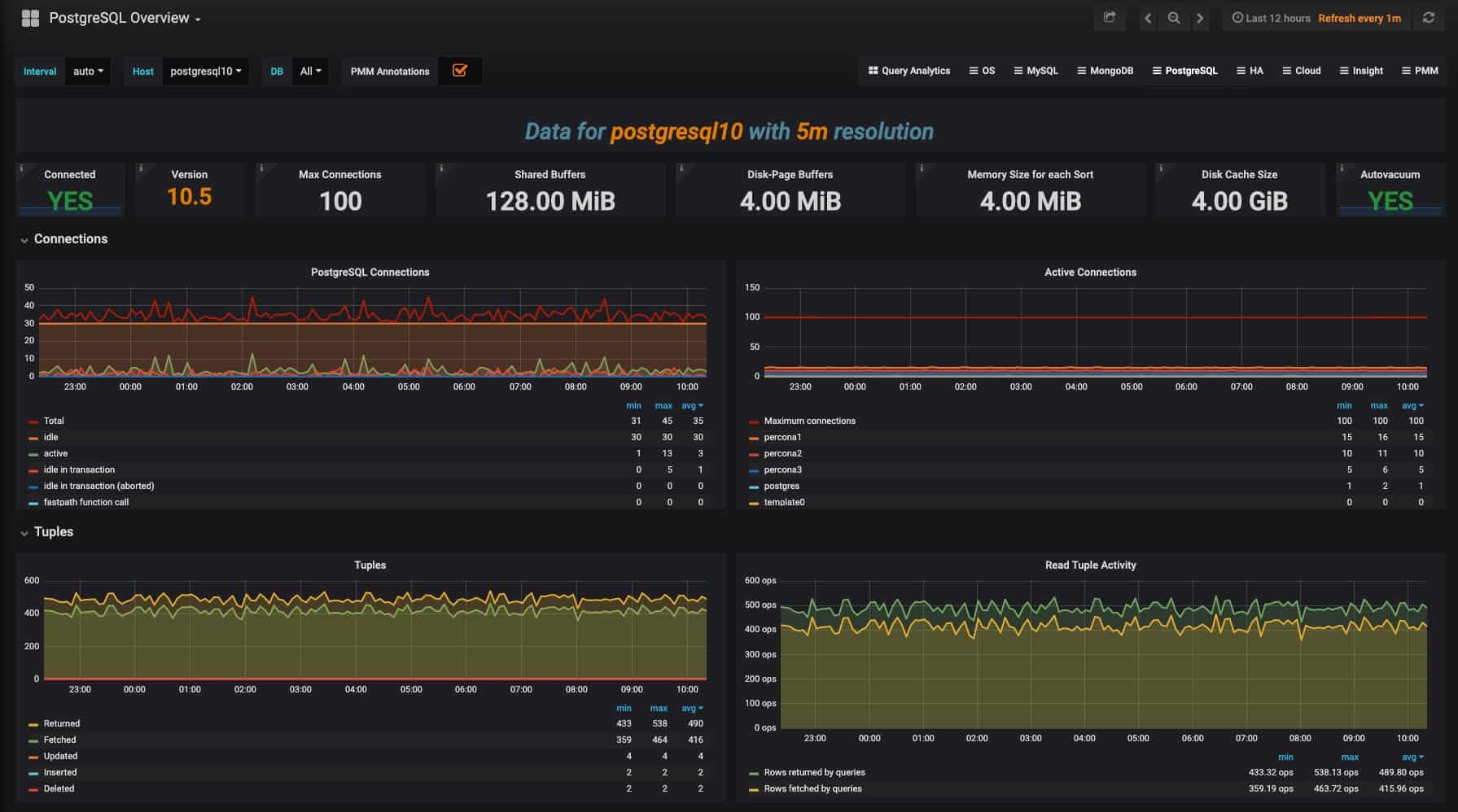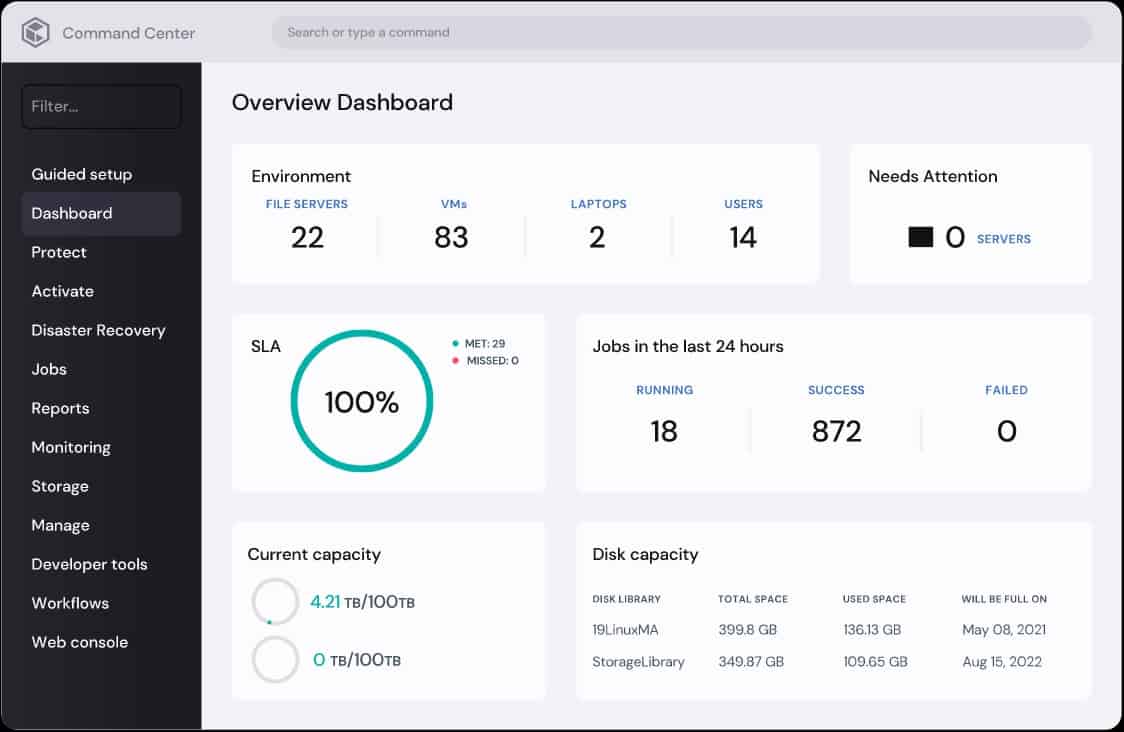Ensuring the security and availability of databases is a top priority for businesses. PostgreSQL, a powerful open-source relational database, is widely used across industries for its solid reputation for reliability and efficiency. However, with its critical role in handling large volumes of data, having an effective backup strategy is essential. A reliable backup not only safeguards data against hardware failures, accidental deletions, or cyberattacks but also facilitates quick recovery during disasters, minimizing downtime and potential data loss.
Backing up PostgreSQL involves choosing the right tool and strategy. Common backup types include full backups, which copy the entire database, incremental backups, which capture only changes since the last backup, and differential backups that log changes since the last full backup. Automated backup solutions streamline these processes, saving time and reducing the risk of human error. Moreover, many tools now offer advanced features such as point-in-time recovery, cloud integration, and encryption to enhance data protection and accessibility.
This article explores the best PostgreSQL backup tools, highlighting their key features, pros and cons, and suitability for different business needs. Whether you’re looking for a simple, cost-effective solution or a comprehensive, enterprise-grade system, this guide provides insights to help you select the right tool for your PostgreSQL environment. From cloud-based services like Ottomatik to robust platforms like N-able Cove Data Protection, these tools ensure that your database remains secure and recoverable under any circumstance.
Here is our list of the best database backup tools:
- N-able Cove Data Protection EDITOR’S CHOICE This backup service is able to copy your PostgreSQL database files and transaction logs to recover from disaster quickly. You can also choose to backup the entire server that you run your database on. Start a 30-day free trial.
- Ottomatik This is a cloud-based service that backs up PostgreSQL databases and is also available for backing up MongoDB and MySQL.
- Google Cloud Backup and DR This Google Cloud service can back up systems that are on-premises as well as those on Google Cloud. Its capabilities include PostgreSQL database backups.
- Percona Distribution for PostgreSQL is a free, community-supported package that manages its databases and configurations through a business with a back and recovery service included. It runs on Linux.
- Commvault Backup and Recovery This software package offers a range of strategies for backup and recovery of PostgreSQL databases and manages the archiving of database logs. It runs on Windows Server.
The vulnerability of your PostgreSQL databases
The fact that some well-known corporate names use PostgreSQL and that its procedures are easy to pick up means that it is worthwhile for hackers to investigate the DBMS and work out how to hijack it or steal from it. The ease of access to a PostgresSQL database backing a website means that e-Commerce enterprises that are not security conscious are vulnerable to attack.
The destruction of any type of database can devastate any business. As well as being a store of customer information, which could well hold the personally identifiable information (PII) of private individuals, the database holds all of your business transactions.
You can’t afford to lose all of the records of your sales and purchases. So, you need to protect that data from destruction or corruption. Some issues require data loss prevention systems to protect a PostgreSQL database. However, in this guide, we are looking at the issue of business continuity.
Backing up PostgreSQL
You need to put in place procedures to recover from the loss of your PostgreSQL databases., Disaster recovery requires planning, and the key element to restoring lost or damaged data is to have a backup copy to hand.
You can keep a backup copy on your local system or a remote server. Most businesses choose both options and create a double backup. However, there is no point in keeping the local copy on the same server that hosts the original database. Writing the backup to removable storage is common practice, such as tape or USB memory stick.
Most DBAs prefer local copies because they can be physically located quickly, and they are still accessible even if the internet connection goes down. Restoring data from a local data store is usually quicker than a repopulation of the database from a remote server. A big issue to consider with local backups is that, even if that copy is on another device, it could still be vulnerable to the same event that destroys the original – flood, fire, or explosion. Therefore, the remote copy is the backup to your backup.
PostgreSQL backup strategies
As well as working out where you want to store backups, you also need to decide the frequency of backup extraction. The answer to this issue depends on the rate of new transactions that hit your databases. Some businesses are content with nightly backups, while others will backup every half hour.
The issue that you need to consider when calculating your backup frequency is that should your database get destroyed, you would lose all of the transactions that occurred after your last backup took place.
Commercial applications will opt for continuous backup, and to make that process regular and reliable, you need to automate it. Unfortunately, the method of data recovery is usually only possible to implement as a manual procedure.
A bonus of implementing an effective and automated backup strategy is that those backup files can also be used for replication management in a distributed database. They can also be quickly restored to a different location, implementing a migration. In addition, backup and recovery services are vital to protecting against ransomware – you don’t have to pay the ransom if you have a close copy of the database to hand.
PostgreSQL backup methods
There are three types of backups that you can implement on any digital system: full, incremental, and differential. A full backup is easy to identify – you take a full copy of the database every time. This strategy would be suitable for smaller databases, and it is also the easiest method to use if you want to implement point-in-time recovery that gives you several rollback points to choose from.
An incremental backup strategy starts with a full backup and periodically extracts structures and records that have changed since the last backup. One backup in a cycle of incremental backups is usually full. A differential backup always extracts the changes that have occurred since the previous full backup.
The benefit of incremental and differential backups is that they involve less data and are quicker to perform. As a result, these strategies are essential options for large databases.
PostgreSQL backup tools
The complexity of running backups in with a DBA’s busy schedule means that this task is worth implementing with automation. You don’t want to bother spending time on the backup process. You just need to be reassured that backups are occurring at your chosen frequency.
DBAs and system administrators only pay attention to the backup service when a disaster occurs and need to restore data. So, data recovery is a task that will demand actual technician time. However, you still want that process to be facilitated by the backup service. This means that most backup tools are backup and recovery systems.
Our methodology for selecting a PostgreSQL backup tool
We reviewed the market for systems to back up PostgreSQL and analyzed the options based on the following criteria:
- A choice of backup strategies
- The opportunity to include database backups in a full server backup
- A coordinated package that provides for disaster recovery support
- The choice of on-premises or SaaS package
- Options to create both local and remote backups
- A free trial, a free tool, or a demo system for a cost-free assessment opportunity
- A fair price for a good, reliable backup and recovery tool that is worth paying for
We have identified some dependable backup and recovery systems for PostgreSQL with this set of criteria in mind.
You can read more about each of these options in the following sections.
1. N-able Cove Data Protection (FREE TRIAL)
N-able Cove Data Protection is proposed here for managed service providers that need to back up their clients’ systems. The backup process for service providers is usually a system-wide operation that doesn’t specifically need to target applications – it just needs to save all data. As with most backup systems, this service can also be used for replication and migration, though not specifically for PostgreSQL database instances.
Key Features:
- File-based backups: Take file backups of SQL dump and transaction logs
- Application-aware database backup: For MySQL, SQL Server, and Oracle
- Backup Azure: Protect data held on Azure as well
Why do we recommend it?
N-able Cove Data Protection is a cloud-based backup service that mirrors its own storage, which provides automatic protection against disaster on the repository server. This service doesn’t offer application-level backups specifically for PostgreSQL databases. It is a file-level or block-level operation. However, you could back up the underlying files that store the database.
You get file-level and block-level backup options with N-able Cove Data Protection, and a nice feature is that N-able includes secure storage space in its plans that gets mirrored to another data center. This means that you don’t need to worry about rippling through two copies. The system is multi-tenanted to keep the data of different clients completely separate. Storage space and data transmissions are protected by 256-bit AES encryption.
Who is it recommended for?
The N-able platform is specifically aimed at MSPs, however, the system could also be used by IT departments. The package has a multi-tenant architecture, so the MSP would set up a sub-account for each client. Subs rivers to N-able N-sight RMM or N-able N-central RMM are the most likely customers of this package.
Pros:
- Multi-tenanted architecture: Suitable for managed service providers
- Delivered from the cloud: Access the console through any standard Web browser
- Replication and migration: Use backups to move or copy databases
Cons:
- No application-aware backups for PostgreSQL: Use the file backup facility instead
While N-able Cove Data Protection doesn’t have a specific feature for backing up PostgreSQL, it does provide integrations that enable it to directly back up Oracle, SQL Server, and MySQL databases. In addition, this service is run from a cloud platform, so your technicians can access the console from anywhere through any standard Web browser. Finally, you can get a 30-day free trial of N-able Cove Data Protection.
EDITOR'S CHOICE
N-able Cove Data Protection is our top pick for a PostgreSQL backup tool because this package is cloud-hosted and includes cloud storage, which itself is backed up for security, so you have no risk of losing your database records with this service. Choose to take a local copy as well as the cloud repository. The transfers to cloud and the cloud storage space itself are protected by uncrackable AES-256 encryption – even N-able technicians can’t access your repository. This package can also back up virtual systems, including Azure-hosted data and the settings and files of Micorosft 365. Recover to a different site if your experience a total wipeout.
Download: Get a 30-day free trial
Official Site: https://www.n-able.com/products/cove-data-protection/trial
OS: Cloud based
2. Ottomatik
Ottomatik is a cloud-based service that specializes in backing up databases. This system can back up PostgreSQL databases and also those managed by MySQL and MongoDB. The primary strategy of this tool is to take full backups and move them to cloud storage.
Key Features:
- Database backup: PostgreSQL, MySQL, MongoDB, and Supabase
- File-level backups: Useful for protecting database logs
- Free option: Includes 1GB of cloud storage
- Local storage possible: Store locally as well as to the cloud
- Multi-tenanted architecture: Suitable for managed service providers
Why do we recommend it?
The Ottomatik cloud platform provides a range of backup services, which include database backup systems. This service is able to back up MySQL and MongoDB as well as PostgreSQL. It doesn’t matter where your databases are hosted, the Ottomatik system can back it up to cloud storage.
The Ottomatik system can backup databases on-premises and those available as services on cloud platforms, including AWS, Azure, and Google Cloud Platform.
Ottomatik is very easy to use. The system is managed from a cloud-based console. You do have to install a package on the host of your PostgreSQL database that extracts data and establishes the data transfer connection. File movements to the cloud storage facility and the recovery package traveling back are protected by encryption.
Once you have a complete backup stored in a safe place, you have other options. That full copy of your PostgreSQL databases can be used to install additional copies around your organization. That creates local copies available in far-flung places to offer better response times than users would get by connecting over the internet to a central server.
The replication architecture is a backup service, and all copies need to be kept up to date. The backup can also be used for migration because you don’t have to restore a database to its original location.
Cloud storage space isn’t included in the Ottomatik package. However, the company does offer a cloud storage service on a separate subscription. The Ottomatik backup system is compatible with Amazon S3, Backblaze, Dropbox, and Google Drive.
Ottomatik is automated and easy to use. You don’t need special technical skills to operate this backup and recovery system. Cloud storage is not included in the plan, but this gives you the option to use a storage system of your choice. This is an affordable service that is accessible to anyone.
Who is it recommended for?
Ottomatik has a Free plan, which will back up one thing once a day. That one thing could be your PostgreSQL database instance. However, the likelihood that you only have one instance is pretty slim. Three paid plans will back up three objects, 60, or 250, which makes this service suitable for businesses of all sizes.
Pros:
- On-premises and cloud databases: Backup databases running on your servers or on AWS, Azure, or GCP
- Migration option: Use the backup archive to move the instance to a different server
- Encrypted storage: Ottomatik technicians can get into it
- Secure data movements: Transmissions to and from cloud storage is protected by encryption
- Backup daily, every five minutes, or every minute: According to your chosen plan
Cons:
- A cloud-based system: No self-hosting option
Ottomatik is offered in four plans that make the service accessible to businesses of all sizes. Unfortunately, the on-premises agent is only available for Linux. All plans are available for a 14-day free trial.
3. Google Cloud Backup and DR
Google Cloud Backup and DR is a service on the Google Cloud Platform (GCP). It offers a way to centralize data storage while creating a local access model. It does this through a system that is similar to virtualization. It overlays a supposed structure over an existing physical system. This, like a hypervisor, combines servers and networks to make copies of a centralized database appear to be local. The platform offers this service for a list of DBMSs, including PostgreSQL.
Key Features:
- Backs up on-premises applications: In addition to backing up data on GCP, this tool can back up data and applications, such as databases
- File backup: Backs up transaction logs as well as database data
- Virtual clones: Create a copy of a database for software development testing
- Point-in-time: Stores timed versions of your data for a choice of recovery points
Why do we recommend it?
Google Cloud Backup and DR is a subscription service that is resident on the Google Cloud Platform. This system isn’t just for banking up Google accounts, although it will do that. You can back up on-premises data with this tool. Its capabilities include application-aware database backups for a list of DBMSs, including PostgreSQL.
Other DBMSs that can be managed in this virtual way by the package include SQL Server, Oracle, SAP HANA, and MongoDB. The service can contain several different DBMSs in the same network and can include those instances resident on GCP. However, the tool won’t back up databases that are hosted on any other cloud platform. The backup repository for all of this service’s copies is held on Google Cloud.
Who is it recommended for?
As it backs up GCP data, including databases, this service is going to be of great interest to the customers of Google Cloud. The tool will also backup on-premises data but if you have accounts on AWS or Azure, you should probably look elsewhere for a backup tool.
Pros:
- Backs up a long list of DBMSs: SAP HANA, Oracle, Microsoft SQL Server, MySQL, PostgreSQL, MariaDB, IBM Db2, SAP IQ, SAP MaxDB, and SAP ASE
- Ransomware protection: Removes the need to pay a ransom
- A metered service: Priced by data throughput
- VM backup: Will backup VMware virtualizations
Cons:
- Only GCP on the cloud: Won’t backup AWS or Azure data
Google Cloud Backup and DR is a metered service, as are most of the facilities of GCP. You can access the system as part of the Google Cloud Free Trial offer which gives you $300 credit on all GCP services.
4. Percona Distribution for PostgreSQL
Percona Distribution for PostgreSQL is a free tool that combines database distribution and backup services. When you consider the mechanism for database replication, that process duplicates the database, and all copies need to be kept up to date. This is the same as a backup service. If you can copy the contents of one database to another location, you can also copy it back again. So, you create your multi-site backup and recovery service that always contains live updates to all instances.
Key Features:
- Free to use: Permanently free, not a free trial
- A package of free tools: This is a bundle of tools that includes analysis systems
- Backup and replication: Builds a backup service into its database replication system
Why do we recommend it?
Percona Distribution for PostgreSQL is a clever system for backing up Postgres databases as part of a distribution/replication process. This system is very efficient and provides fast availability for recovered databases. The system also includes activity logging for auditing. Better yet, it is free to use.
For extra security, you can include a cloud storage system as a target for one of the replication locations. Then, voila, you have a full PostgreSQL backup and recovery service built into a database distribution system. You also have all of the elements you need to migrate a database.
Data can be sent to Amazon S3 accounts or S3-compatible systems. PostgreSQL instances running on AWS, Google Cloud Platform, and Azure can also be included in the plan.
Who is it recommended for?
The Percona system runs on Linux but it is also able to backup instances running on cloud platforms. It only backs up to AWS, however. The only expense you have in running this system is that you need to pay for your own AWS S3 account to store the repository.
Pros:
- Professional support available for a fee: The free tool doesn’t include support
- Failover architecture: Automatically cover for a troubled instance
- Distribution for faster global delivery: Maintain copies in data centers around the world
Cons:
- Runs on Debian, Ubuntu, and RHEL: Not available for Windows or cloud platforms
One problem with the Percona system is that the on-premises agent is only available for Linux. Download Percona Distribution for PostgreSQL for free.
5. Commvault Backup and Recovery
Commvault Backup and Recovery can backup databases and has competence with a long list of DBMSs, including PostgreSQL. Databases can be on-premises or cloud-resident. Other options offered by Commvault include whole server, disk, and file backups.
Key Features:
- Data protection platform: Backup is part of a wider service
- Database backups: Specific integrations with a long list of DBMSs, including PostgreSQL, MySQL, SQL Server, and Oracle
- Backs up cloud instances: PostgreSQL databases can be hosted on Azure, AWS, GCP, or Alibaba Cloud
Why do we recommend it?
Commvault Backup and Recovery is able to protect data on-premises and on cloud platforms. It isn’t only for PostgreSQL backups because it can also backup file systems and other applications. The Postgres data backup service gives you options on how to proceed – backup and restore logs or the entire database.
The Commvault system’s backups can be stored locally and will also be sent to a cloud server. The backup files are available for data recovery, and they can also be used for replication and migration.
Who is it recommended for?
The Commvault system’s benefits are that it is fast and, depending on which strategy you choose, can restore objects within a database or the whole instance. The software runs on Windows Server. However, the data that it backs up can be running on other OSs and the Commvault system will manage them across the network.
Pros:
- Point-in-time recovery: Restore to a specific date and time
- Dual level: Backup locally and on the cloud
- Include sensitive data protection: The platform includes data discovery and activity logging
Cons:
- Software is only available for Windows Server: Can backup other platforms across the network or internet
The Commvault Backup and Recovery system installs on Windows Server and has Unix, Linux, Windows, and Windows Server, agents. Additionally, the Backup and Recovery service can be assessed through a demo system.
PostgreSQL Backup FAQs
Does Postgres do backup?
Within PostgreSQL, there is a utility called pg_dump that can issue a backup. You can issue this command at the command line within the home directory of your database instance.
What are the different approaches for backing up PostgreSQL data?
There are three fundamentally different approaches to backing up PostgreSQL data.
- Perform an SQL dump and store that file.
- Copy over all of the files on your server, taking the transaction logs with the batch
- Backup the entire server that holds the database
What is hot backup and cold backup in PostgreSQL?
A cold backup occurs when all of the database files are closed. This functions as a straightforward file copy. A hot backup is continuous and requires every transaction in the database to be mirrored, creating a live copy.


